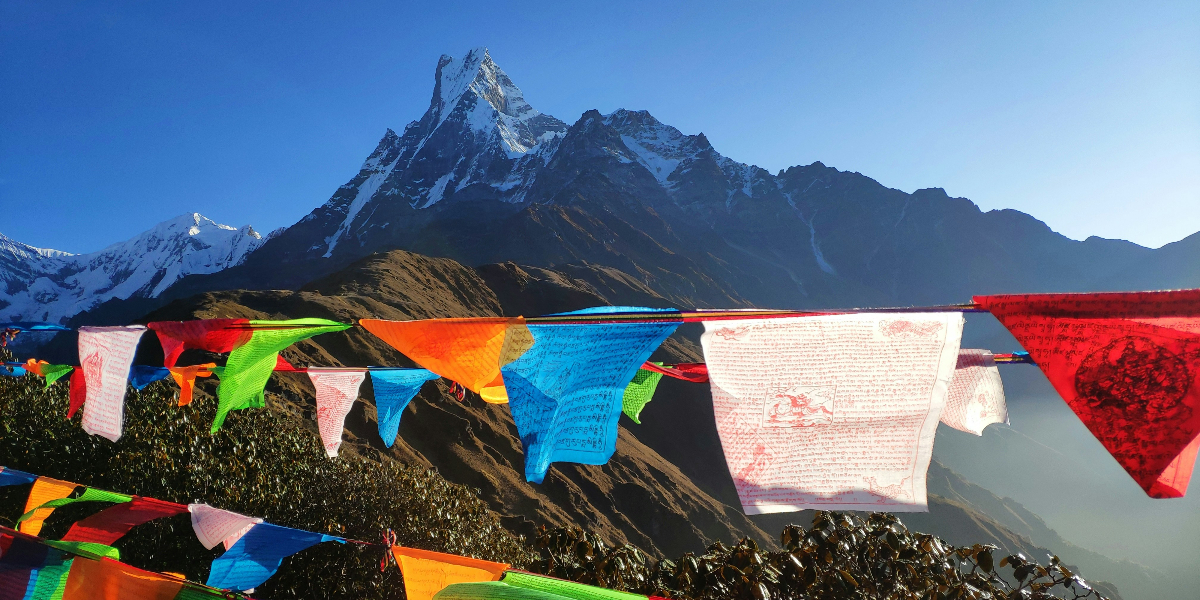Will Cockrell has been a climber and mountaineer for over 30 years and is a journalist on subjects of outdoor adventure. He has spent two decades as a senior editor, writer, and consultant for national magazines, including Men’s Journal, Outside, Men’s Fitness, and GQ. Cockrell has also worked as an editorial consultant and creative for the brands Patagonia, Red Bull, and Eddie Bauer.
Below, Will shares five key insights from his new book, Everest, Inc.: The Renegades and Rogues Who Built an Industry at the Top of the World. Listen to the audio version—read by Will himself—in the Next Big Idea App.

1. How did a mountain that was once considered unclimbable—later downgraded to suicidal—become one that thousands of people could climb relatively safely?
The first ascent of Mount Everest was an important milestone. But the 174th ascent is the one that sealed its destiny. In climbing and mountaineering, first ascents are a big deal—perhaps the biggest deal. On Everest, however, it was a far bigger deal when, in 1985, a wealthy oilman and ski resort owner named Dick Bass (a self-described amateur climber) was helped to the summit and back down safely by a well-known elite mountaineer named David Breashears.
While no money was exchanged between Bass and Breashears for this climb, Dick Bass loved to crow about how his tenacity far outweighed his experience. When Bass appeared on the Tonight Show a couple of weeks after he summited—for becoming the first person to climb the Seven Summits, the highest point on each continent—tens of millions of people learned that tenacity alone could get you to the summit. They weren’t wrong.
What we also learn from Dick Bass is that the dream to stand atop Everest was never exclusive to climbers—it turns out that all sorts of people from all sorts of walks of life had pictured themselves on that summit. Bass’ friend Frank Wells, the CEO of Warner Brothers, and later Disney, was also attempting the mountain at the same time. I’d argue that since it wasn’t just climbers who had this dream, once Bass had climbed it, the challenge no longer belonged to climbers. Elite mountaineers look up at a mountain and dream of doing its most difficult line within their ability. Most non-climbers feel a mountain like Everest will be plenty hard without self-imposed handicaps and are just looking for the best, easiest, and safest way up. And it turns out there was an easy way up Everest: with a guide.
2. The guiding era on Mount Everest is a blip in the history of mountaineering.
The guiding industry on Everest is, technically, only 34 years old. Yet mountain guiding goes all the way back to the 19th century. It wasn’t until the 1990s, though, that a guiding company advertised a guided Everest climb. And it wasn’t until 1992 that paying client climbers finally stepped on the summit with the help of guides—seven clients to be exact. Clients that year included a bar owner from Alaska and a couple of high-flying investment bankers.
“What we also learn from Dick Bass is that the dream to stand atop Everest was never exclusive to climbers.”
One of the reasons this matters in understanding Everest today is that by the time writer Jon Krakauer got caught up in that ferocious and deadly storm in 1996, it was an industry in its infancy and not, as so many believed from reading Krakauer’s mega-famous book, Into Thin Air, the culmination of many years of bad decision making and poor judgment. Don’t get me wrong, that tragedy—in which eight climbers who were part of guided expeditions died—was the result of poor judgment. But so many of the public’s opinions, biases, and ire toward the guiding industry were seeded by that one powerful book. The industry’s reputation never really recovered from it.
Interestingly, after the release of Into Thin Air, business boomed, as the perceived risk and the prospect of death amped up the allure of the challenge.
3. Sherpa climbers had never guided anyone on Everest until about 20 years ago.
The ethnic Sherpas of Nepal, the community of people who live in the foothills of the Himalayas, are known to have a higher red blood cell count and for their strength and stamina at altitudes that crush most westerners. A Sherpa workforce has been the backbone of the industry and props up the entire infrastructure. Sherpas have ushered hundreds of Westerners to the summit, often while carrying their client’s packs.
But one of the biggest myths about Everest expeditions is that Westerners were regularly being “guided” to the summit by Sherpa climbers, who were not being given credit for their effort. You often even hear people say that Tenzing Norgay guided Edmund Hillary to the summit in 1953, during the first ascent. But the role of a trained mountain guide—and this is of life-or-death import on a mountain like Everest—is, largely, to save lives when things go wrong. Broken bones in the death zone, avoiding avalanches, and crevasse rescues all require a highly technical skill set. Sherpas climbers and employees of the guiding companies simply did not begin seeking out this training until about 2005, and it has been a slow process. However, things have turned a corner. Currently, there are more fully trained Nepali guides operating on Everest today than Western guides.
4. Guided climbing in the Himalayas is no longer a Western industry.
It would be fair to say that climbing and guiding Himalayan peaks, including Everest, was a Western idea—Nepalis see the mountains as gods and goddesses and, especially older Sherpas, prefer to stay off them. It’s also fair to say that Western guides created the guiding industry. But here is what’s so fascinating: There are roughly double the number of Nepali guides and guide companies on Everest right now than there are Western guides.
The main reason for this is that sherpas fell in love with climbing! You probably would, too, if climbing Everest was no harder than going on a really long hike. It has been incredibly reductionist to say that the Sherpas climb these mountains because they have to. The idea that a Nepali would only work on Everest under dire circumstances to feed their family is outdated. As the industry grew, so did the wealth in the Khumbu Valley. The Sherpa people are savvy and shrewd businesspeople. Today, this is one of the most prosperous regions in a very poor country because of the trekking and climbing industries.
“The idea that a Nepali would only work on Everest under dire circumstances to feed their family is outdated.”
I hiked through the Khumbu to reach Everest Basecamp in 2022 and was surprised by the sense of community around the industry. Many Sherpa families are now sending their children to be schooled in Kathmandu, and this younger generation is full of engineers, pilots, and entrepreneurs. But because of their early exposure to mountaineering, many Sherpas of this generation also discovered climbing—for fun—and mountaineering is now a huge and celebrated part of Nepali culture. Nepalis have an enormous amount of pride in the role their country has played in mountaineering history, and many Nepalis are achieving fame and fortune far beyond what any Western guide or climber ever achieved through the Everest guiding industry.
5. Even in 2024, sharing the summit of Mount Everest with a crowd is optional.
In 2019, newspapers all over the world published that shocking photo showing dozens of bubble-suited climbers stuck in a horrific traffic jam on the final ridge to the summit—in the death zone, where time is your worst enemy. By some accounts, it took people two hours to cover a distance that normally takes less than an hour. Whenever we see photos or videos taken from the summit, they often show a small crowd jostling for space to take a selfie.
Don’t get me wrong: Everest is a crowded mountain. Getting stuck in traffic jams has happened repeatedly during the first good weather window of each season. However, there is very rarely only one good-weather window. In fact, there are often two or three. During my interviews with Everest guides from around the world, at least two Western guides told me they walked onto the summit of Everest the same year that photo was taken, and they and their clients had it all to themselves, in perfect weather.
Few realize that this initial dash for the top is far more calculated and intentional than people think. One of the things that characterizes many modern-day guided Everest expeditions is a desire to go for the top during the first “weather window”—defined by a super-predictable five-day outlook. This is largely a strategy of the Nepali companies, who have far more clients to manage than the Western companies and have a far more business-minded approach to making clients happy. The possibility of only one weather window in an Everest season is unlikely. Nevertheless, it haunts client climbers so much that many push to go for it as soon as humanly possible.
To listen to the audio version read by author Will Cockrell, download the Next Big Idea App today:





























